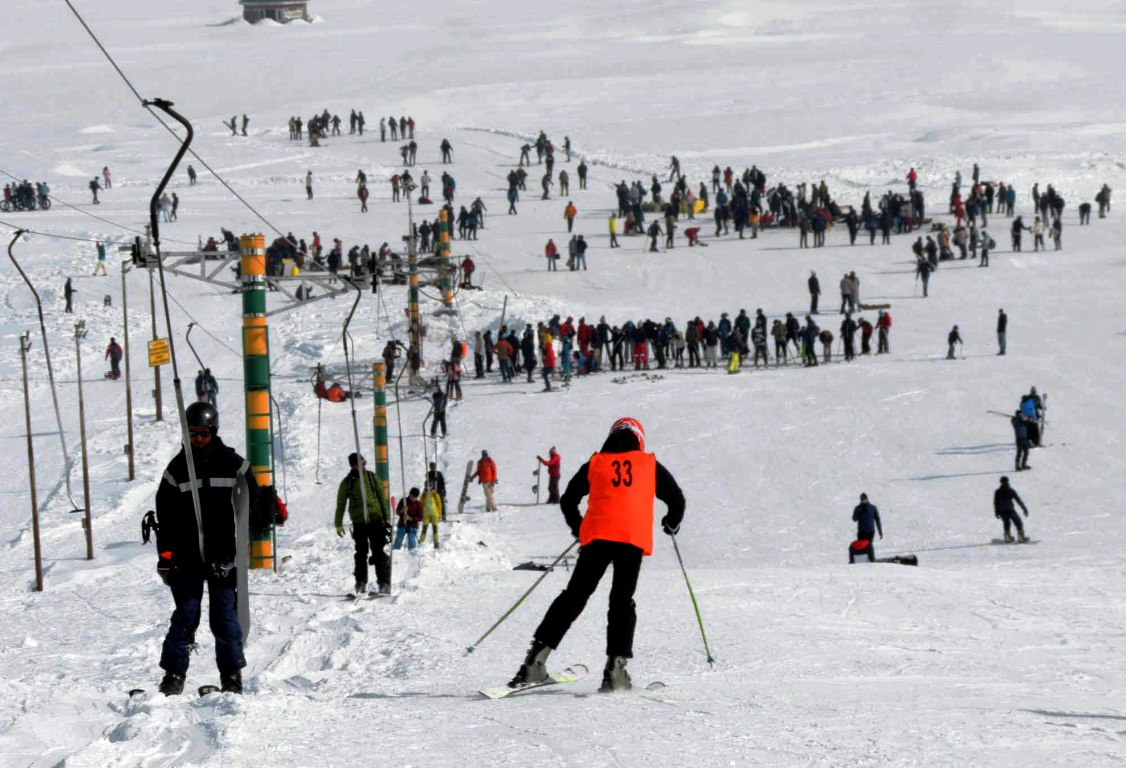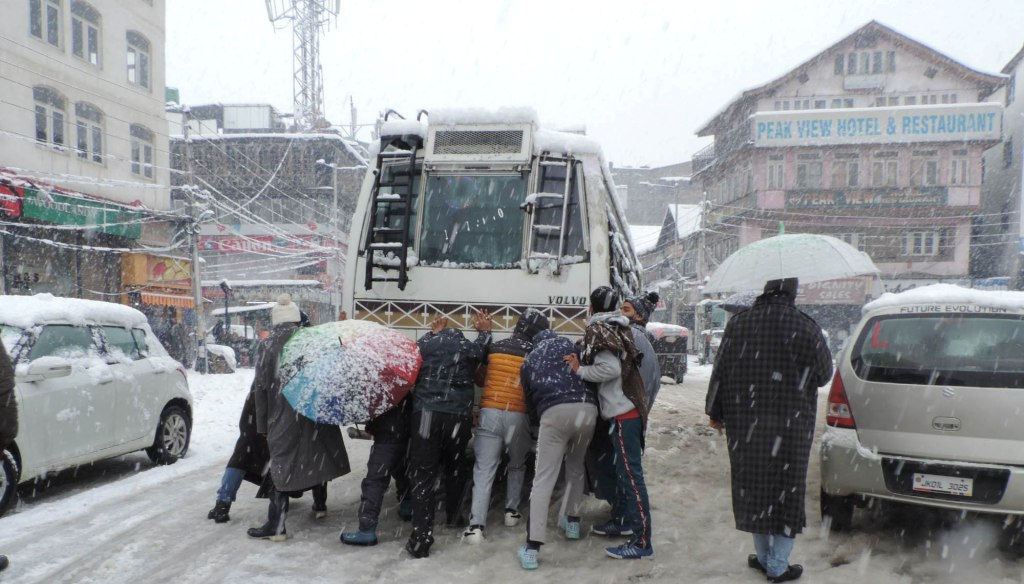by Umair Shafiq Khanday
Elderly persons have decreased feedback mechanisms to thirst, so they get dehydration unnoticed. Patients with uncontrolled diabetes, heart failure and kidney diseases, and those hypertensive patients using diuretics have high chances of dehydration.

The severe part of Kashmir winters comprises three months. It is divided into three parts called the Chilas: The Chillai Kalan, the Chillai Khurd, and the Challai Bache.
Chillai-Kalan is the 40-day period of harsh winter. It begins on December 21 and ends on January 31 next year. Chillai-Kalan is followed by a 20-day long Chillai-Khurd (small cold) that occurs between January 31 and February 19 and a 10-day long Chillai-Bachha (baby cold) which is from February 20 to March 2.
Chillai Kalan is a Persian word that in a literal sense means, major cold. December 21 marks the beginning of Chillai Kalan every year and thus, begins the period of harsh cold and continues till January 31. In this 40-day period, nights are chilly and day temperatures thrive in single digits. Historically, during this period, Kashmiris stay indoors surviving on dried preserved food and enjoying folklore and traditional music.
During Chillai-Kalan, the weather in the Kashmir valley continues to remain dry and cold with minimum temperatures hovering below the freezing point.
The snow during this 40-day period freezes and lasts longer. It is this snow that adds to the Kashmir glaciers and replenishes the perennial reservoirs that feed the rivers, streams and lakes in Kashmir during the months of summer. Any snowfall after the chillai kalan does not last long.
In the past, many families would prepare Shabdeg on the first day of Chillai Kalan. A fat duck would be cooked with turnips and spices in an earthen vessel during the night intervening Dec 20-21.
For many years there has been more snowfall and cold during chillai khurd and chillai bachcha than during chillai kalan. The discomfort of cold is exacerbated by the erratic supply of power.

Every year, residents cover their windows with plastic to prevent the cold air from seeping in during the peak winter. While kangris become indispensable for most residents of Kashmir, the well-to-do huddle together in Hamam’s – rooms with stone floors that are warmed by burning firewood in a hearth, underneath. Others spend long hours in mosques even after prayers, as the hamams there provide a warm backdrop against which Valley residents socialize.
Every year, when winter sets in, weatherman Sonam Lotus acquires the status of a celebrity. Residents anxiously wait for updates from the head of the state’s meteorological department before stepping out of their homes.
Traditionally, Kashmiris used to dry vegetables like tomatoes, turnips, brinjals and gourd during summers to be used during winters when the Valley would remain cut off from the rest of the country. The tradition continues in remote and far-flung areas of the Valley.
However, with the Jammu-Srinagar National Highway becoming an all-weather road, fresh vegetables are available in the market throughout the year and the tradition of drying vegetables is no more seen in cities and towns. Dried fish, popularly known as Hokh Gard in Kashmiri, is, however, still used as a delicacy during the winter.
Due to intense cold, people put excessive clothing, which causes unrecognized sweating and the use of warmers within rooms cause dry warm air, which causes more water loss from the skin. On average, experts believe, we lose around half a litre of water every day through breathing and skin (insensible loss) and we intend to take less water due to cold and reducing visits to the loo. Elderly persons have decreased feedback mechanisms to thirst, so they get dehydration unnoticed. Patients with uncontrolled diabetes, heart failure and kidney diseases, and those hypertensive patients using diuretics have high chances of dehydration.

Precautions to Be Taken
Harsh winter has started and it’s time to brace ourselves for the chilling and harsh weather. It’s that time of the year when you get irritated by dry skin and frequent flu-fighting that ruins your winter plans. Doctor clinics and hospitals are filled with patients suffering from colds and coughs. It is essential to safeguard yourself from the cold weather and stay healthy throughout the season. Though it seems difficult, there are several ways to keep the commonly suffering ailments away from your family.
(1) Wear extra layers of clothes to keep yourself warm.
(2) Maintain hygiene.
(3)Moisturize frequently.
(4) Avoid consuming cold water.
(5) Avoid Hot water baths.
(6) Eat a healthy diet.
Prepare for Emergencies
Be prepared for weather-related emergencies, including power outages.
(1) Stock food that needs no cooking or refrigeration and water stored in clean containers.
(2) Protect your family from carbon monoxide (CO).
(3) Keep grills, camp stoves, and generators out of the house, basement and garage.
(4) Locate generators at least 20 feet from the house.
(5) Leave your home immediately if suffocation is detected.
Driving in the winter means changes in the way you drive. Snow, sleet and ice can lead to hazardous road conditions. Prepare your vehicle for the winter season.
Shovelling snow or using a snowblower is among winter’s most gruelling activities. High levels of activity in cold temperatures put many people at risk of heart attack, especially those that have inactive lifestyles.
Use first aid to help someone who may have hypothermia or frostbite, hypothermia and many other emergencies.

Carbon monoxide detectors save lives. Every year, over 400 people die and 50,000 are treated for carbon monoxide poisoning.
The most common symptoms of carbon monoxide poisoning are often described as “flu-like” – headache, dizziness, weakness, upset stomach, vomiting, chest pain and confusion.
Avoid Injuries While Enjoying the Winter Weather
Whether you are skiing, snowboarding, sledging or skating, take safety precautions like learning basic skills and using the appropriate gear for the sport.
(The author is a student of BSc Nursing at Pacific Institute of Medical Sciences, Udaipur. The opinions expressed in this article are those of the author’s and do not purport to reflect the opinions or views of Kashmir Life.)















